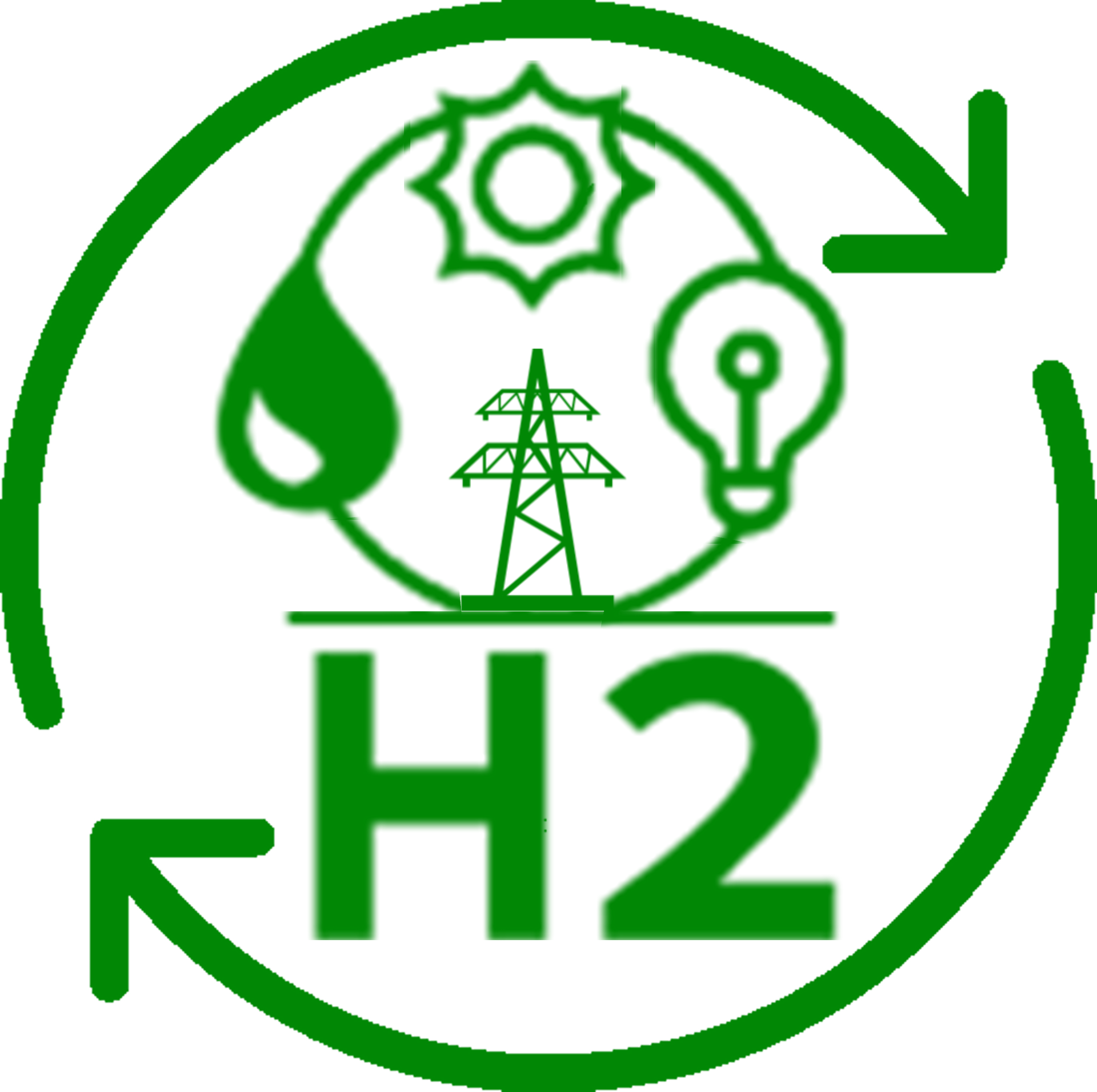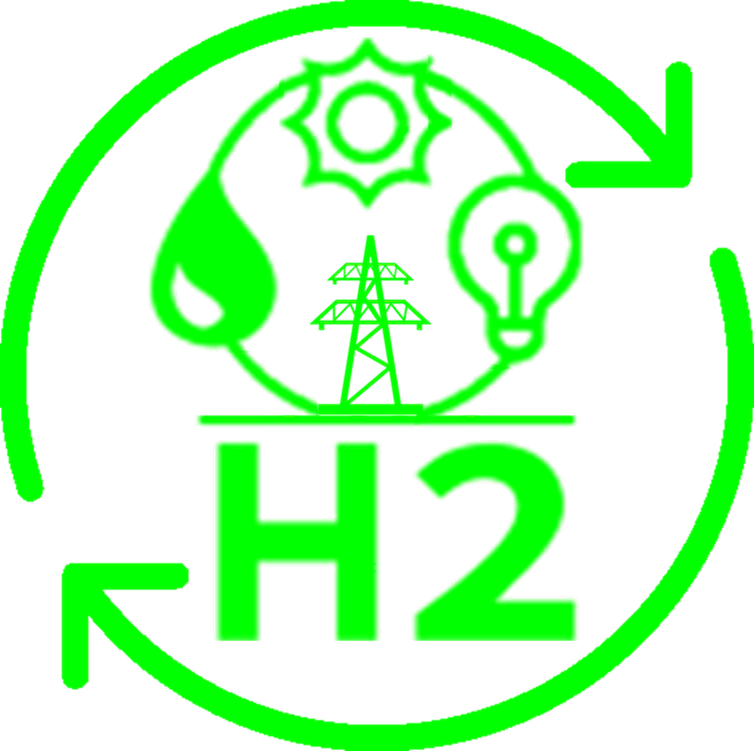MICROGRID
Power Plants
Learn More →
Green HYDROGEN
& TURNKEY
GREEN HYDROGEN POWER PLANT
One of the challenges related to the integration of renewable energies into the energy system is their intermittency.
Intermittent renewables are challenging because they disrupt the conventional methods for planning the daily operation of the electric grid.
Their power fluctuates over multiple time horizons, forcing the grid operator to adjust its day-ahead, hour-ahead, and real-time operating procedures.
Take the example of solar panels. Electricity generated through solar photovoltaic panels is clean inexhaustible, contributing to sustainable local development in three different areas: social, economic, and environmental.
Solar energy is inherently only available during daylight hours, so the grid operator must adjust the day-ahead plan to include generators that can quickly adjust their power output to compensate for the rise and fall in solar generation. Furthermore, power plants that typically produce electricity all day every day might instead be asked to turn off during the middle of the day so that the energy produced from solar can be used in lieu of fossil electricity.
To effectively use renewable energy, appropriate energy storage technology will need to be developed.
Hydrogen has a critical role to play in helping the world reach net zero emissions.
Hydrogen can be used as a raw material, as a fuel or as an energy carrier. It has many possible applications in the industrial, transport, energy and construction sectors. It therefore offers a solution to decarbonise industrial processes, especially in economic sectors where reducing emissions is urgent and difficult to achieve.
Hydrogen is a versatile energy-carrying element that can be deployed to assist with a variety of energy sector goals.
Hydrogen has long been touted as the “fuel of the future”. With global momentum to achieve decarbonization driven by new targets, regulations and technological advancements in hydrogen production, that future is now - a fuel of tomorrow and today. Here are principaly reasons why hydrogen is becomes one the vital renewable energy source of tomorrow and today:
Hydrogen is a secondary source of energy. It stores and transports energy produced from other resources (fossil fuels, water, and biomass).
Clean hydrogen — produced from renewable energy, can allow for the decarbonization of a range of key sectors such as energy production, mining & minerals industry, iron and steel production, and long-haul transportation.
Hydrogen is the most common element in the universe. The first chemical element in the periodic table, hydrogen is the initial "fuel" of stars. In the universe, 92% of what is known is made up of hydrogen. It is the stuff that stars are made of and a fundamental building block of all life on Earth. Its name means "water generator" and was coined in the late eighteenth century. 70% of the Earth's surface is covered with water (H 2 O), a chemical compound made up of hydrogen (H) and oxygen (O). Hydrocarbons, such as methane (CH 4 ) and crude oil, are also important hydrogen-containing compounds. Most hydrogen is therefore found in chemical compounds: on its own it is an invisible, odorless and non-toxic hydrogen gas, lighter than air and which only liquefies at a temperature of -252°C.
It can be used to produce other compounds or as a fuel to produce energy. Is possible to produce, accumulate, move and use energy in different ways thanks to this very versatile element. It can be produced using renewable energy, nuclear, natural gas, coal and oil. The emission-free properties make green hydrogen a promising candidate for the transition to a new energy carrier. With green hydrogen, the goal of a low-carbon economy becomes achievable.
Three main types of hydrogen are "grey" hydrogen, "blue" hydrogen and "green" hydrogen.
Hydrogen produced using energy from hydrocarbons, particularly natural gas, is known as “ grey ” hydrogen.
Hydrogen produced from natural gas and later decarbonised using carbon capture and storage is sometimes called blue or decarbonised hydrogen.
Hydrogen produced via electrolysis, by splitting water into oxygen and hydrogen using electricity from renewable sources is sometimes called green or renewable hydrogen.
Yes, hydrogen is safe if handled correctly. Hydrogen is a non-toxic gas at room temperature and atmospheric pressure. Hydrogen is explosive under certain conditions when mixed with air – similar to natural gas. When handled responsibly, green hydrogen is less dangerous than other flammable fuels. Therefore, tried and tested international standards exist on how to design and monitor hydrogen installations.
Hydrogen has long been used in the chemical industry for many manufacturing processes. The interest in hydrogen for storage and generation of electrical energy has only been focused on more strongly in recent years. Above all, the very volatile electricity generated from photovoltaic and wind power plants strengthens the need for flexible energy storage. There are a multitude of possible applications for hydrogen technologies:
As an energy carrier, hydrogen can be converted to electricity, heat or kinetic energy and can be used:
Hydrogen technologies are mechanical or chemical applications in which hydrogen is used. A distinction can be made between five types of hydrogen technologies:
The hydrogen supply systems investigated in this work are concerned with hydrogen that is produced from water electrolysis.
The three hydrogen supply systems investigated are as follows:

Advantages of green hydrogen:



Hydrogen can provide a cost-effective, clean energy infrastructure, contributing to energy supply security both at local and country levels.
A 100% renewable Non-Intermittent local renewable energy generation solution that help guide the transition towards a sust ainable and decarbonised energy model.
DABITRON New Energy Solutions - local Non-Intermittent Green Hydrogen Power Plant
Technologies for hydrogen use.
To generate zero-carbon electricity, the hydrogen used is either “green”, which means hydrogen derived from water by electrolysis using energy from renewable sources.
Technologies for hydrogen infrastructure.
At DABITRON we are developing projects for the production of hydrogen from renewable sources through the electrolysis of water (so-called green hydrogen).

Hydrogen is one of the most abundant elements in the universe – DABITRON develop and provide innovative DABITRON H2 SYSTEM LOOP ® (and/ or DABITRON DH2SL ®) green hydrogen power plant (on-grid/ off-grid) to encourage the adoption of hydrogen as a key player in the energy sector, that contributes to building a local energy sector with net-zero emissions. DABITRON end-to-end green electricity solutions to power electrolyzers making green hydrogen which will be used as an energy carrier to produce electricity for the local marketplace.






Values and opportunities to deployment of local non-intermittent 100% renewable energy generation
Encourage the adoption of green hydrogen as a key player in the energy sector that contributes to building a local energy sector with net-zero emissions.
Energy Surety. Safe havens during power outages - DABITRON DH2SL® non-intermittent Green Hydrogen Power Plants have the potential to provide public security and safety benefits in the form of improved overall electricity system resilience while also serving as safe havens during extended power outages..
A strong grid. Provide a long-term sustainable source of electricity, boost electricity supply system efficiency, flexibility, and reliability. Rduced power interruptions and avoided costs. Critical load reliability. Voltage support. Loss reductions (transmission and distribution).
Save on operating costs (eg. for an industrial plant or mining operation thereby increasing the company’s profitability).
Encourage the sustainable development of local productive sectors and the growth of new jobs. Creating jobs for the local community.
Renewable integration.Cut fuel consumption, reduced overall energy costs, emissions reductions, and improve environmental credentials. The ‘zero-mile’ local energy production avoids energy waste through losses during distribution.
Renewable Power-to-Hydrogen-to-Power
an intermittent renewable source: projects installed on the ground and/or building-integrated photovoltaic and micro wind turbine (BIPvWt) system.
the incorporation of renewable hydrogen power
battery energy storage systems (BESS) and green hydrogen (H2) storage
Commercialization of 100% Renewable Energy through PPA contracts.
electronic-vehicle charging and/or Hydrogen refuelling station


DABITRON H2 SYSTEM LOOP ® multi-megawatt turnkey Non-Intermittent Green Hydrogen Power Plants, a 100% renewable energy solution that help guide the transition towards a sustainable and decarbonised energy model.
We harness the earth’s most abundant resources – the heat of the sun, the purity of the water and humidity in the air – to power a sustainable future with local 100% renewable energy. Combining utility-scale solar, storage, hybrid energy, and grid solutions as well as entire hydrogen value chain and tailored services, DABITRON planning, develops, constructs, and operates renewable hydrogen power plants, solar farms, energy storage facilities, hybrid energy park and microgrid plants. Together we can create a brighter future for everyone, more quality of life, energy access for any community and a local Sustainable Development in harmony with the environment.